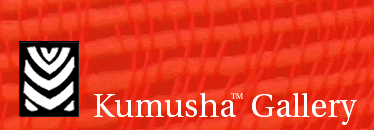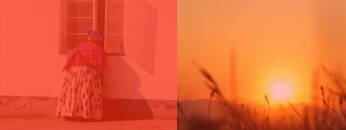Textiles & Soft Furnishings
Traditional Textiles: Mud Cloth
Mud Cloth originates from the South Central area of Mali where its production has deep cultural roots and is an ongoing tradition. Mud cloth is made from hand-spun cotton and is woven into strips on narrow hand-and-foot looms. The strips are sewn together and decorated using all natural dyes. The rich warm colours are the result of blending assorted brightly coloured clays and earth (thus the term mud cloth) with teas brewed from the leaves and bark of indigenous trees, shrubs and other plants.
The patterns that make up the designs of the mud cloth convey complex cultural meaning and no two cloths are exactly the same. Mud cloth is a prized symbolic gift at weddings and other ceremonies in Mali.
Mud cloths typically come in sheets comprised of nine strips and are approx 150cm in length and approx 120cm width, although exact sizes vary. The cloths make a beautiful throw, table cloth or wall hanging. Also available are attractive cushion covers and table runners.
Traditional Textiles: Kubu Cloth
Kubu Cloth, the magnificent embroidered and appliqué fabric of the Kuba people in the Congo is the best known example of the ancient African tradition of raffia cloth weaving. The abstract patterning displayed in Kuba cloth served as an inspiration to artists such as Klee, Picasso, and Braque. Matisse displayed samples of his extensive collection on the walls of his studio.
The basic unit of Kuba weaving is the undecorated square of plain raffia cloth woven by men on an upright single peddle loom. Although men sometimes decorate the woven cloths with appliqué and embroidery, only the women produce the most laborious and prestigious type of cloth decoration, cut pile embroidery.
It takes about a month of regular work for a woman to complete a small square of Kuba embroidery using techniques that include dyeing, detailed needlework and clipping individual tufts. Designs are usually created on an ad hoc basis but based on one or a combination of more than 200 known designs, most of which are identified by name. The same patterns are used on other Kuba art forms including wood sculpture, metal working, mat making and women's body scarification.
Kubu cloth squares can be used as a table centre piece, or stretched across an artists frame and hung on the wall. They can also be transformed into stunning cushions - examples of which are in the Gallery.
Longer pieces of Kuba cloth embroidery are suitable for wall hangings and other soft furnishing applications.
Also in store are smaller embroidered cloths that make stunning table runners.
Contemporary Textiles
Southern Africa has long been known for its high quality cotton products. We have a range of contemporary 100% cotton soft furnishings which include:
- Hand painted cushion covers from Zimbabwe in earthy tones of brown, rust, ochre and gold.
- Cushion covers, throws, bedspreads, table mats and serviettes in creamy soft cottons to complement any décor.
- Stunning beaded cotton covers in brilliant red and orange that evoke an African sunset.

